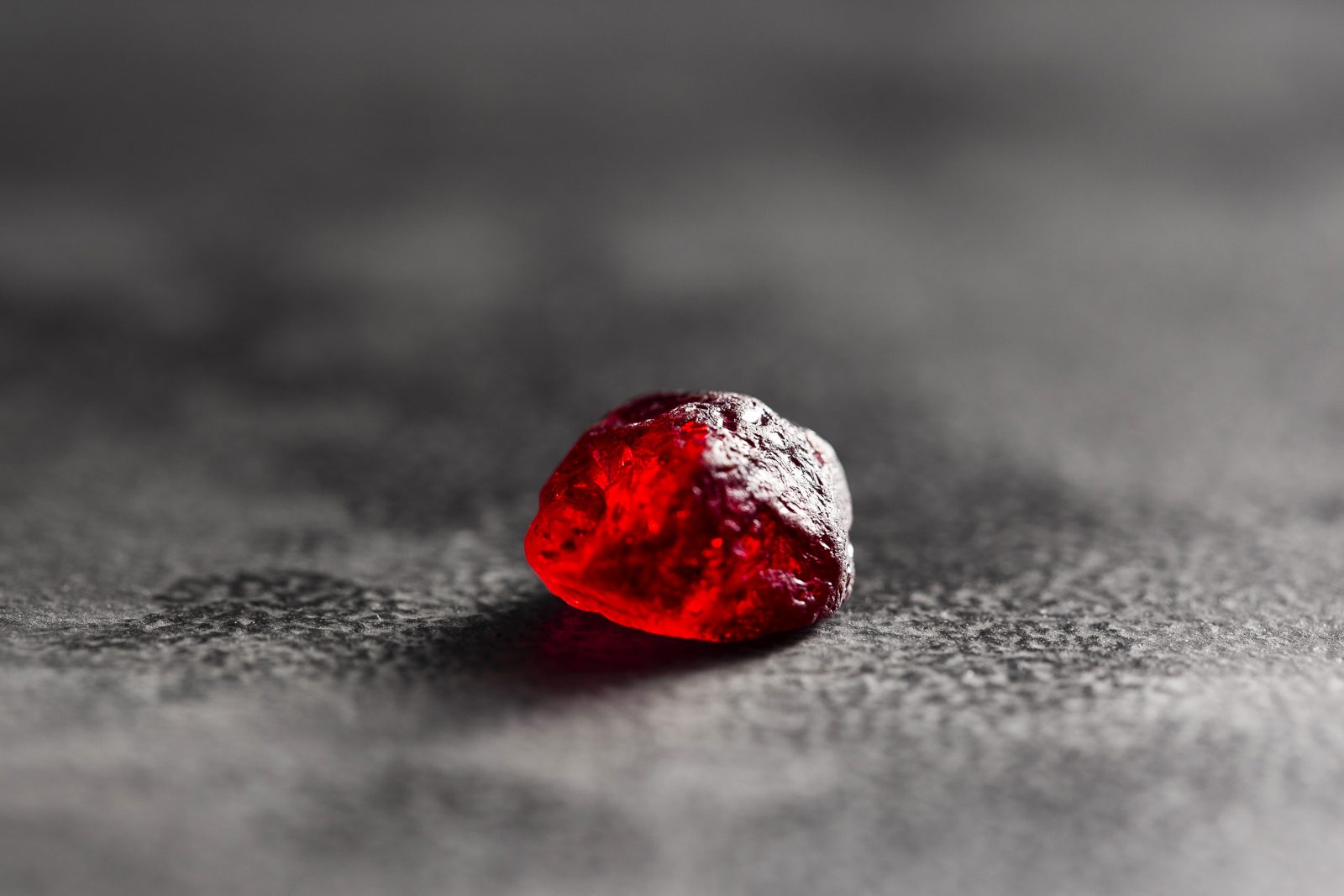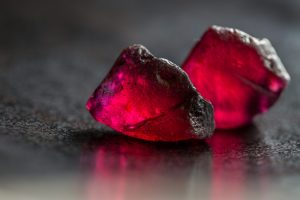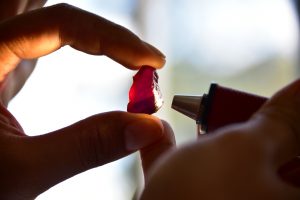Mozambique Ruby – Origins

History
Rubies were treasured by early cultures, as they represented the redness of the blood that flowed through their veins.
Once described as ‘the heart of Mother Earth’, rubies are associated with passion, prosperity and protection. Many believed that rubies held the power of life, and so they were often carried into battle for protection.
In India, the earliest accounts of rubies come in ancient Hindu texts, where the ruby was called Ratnaraj, or ‘king of gemstones’ in ancient Sanskrit. Even today, in some countries, rubies are occasionally laid beneath the foundation of a building to bring good fortune to the structures and those that live in them.
Rubies
Rubies are in a class of their own and rank amongst the rarest of the world’s most precious gemstones. In the hierarchy of precious material, the ruby sits at the very top – large natural rubies frequently cost more per carat than colorless diamonds.
Rubies vary in color more that you might expect, from purplish-red to orangy-red, with the most desirable hue a pure vibrant red. Rubies and sapphires share the same characteristics, crystal structure and chemical composition. They only differ in the trace element, chromium, from which rubies get their color. The word ruby come from ruber, Latin for red.
Traditionally, the most prized colors for rubies are a slightly bluish red body color and the purer red fluorescent emission. As with all gemstones, the color should be evenly distributed through the gemstone.
How Mozambican rubies are formed
Northeastern Mozambique is at a unique, geologically critical junction between two treasure-bearing belts of rock, formed between 500 and 800 million years ago. Rubies and Sapphires belong to the mineral family corundum, one of the hardest minerals on Earth.

Only the red variety of corundum crystal is a ruby. Under extreme heat and pressure, colorless corundum can replace some of its densely packed aluminum atoms with chromium to give the ruby its deep red color. The presence of silica, incredibly common in the Earth’s crust, prevents this from happening – so rubies are rare indeed.
Natural rubies like most gemstones, feature inclusion that tell the story of the gems journey since its formation, making every gemstone unique.
There are two sources of rubies in Montepuez, Mozambique: the primary, original rock formation and secondary deposits, created by ancient rivers, now long gone but once trembling vibrant red gems downstream.
About Mozambican rubies
The Montepuez ruby mine in northeastern Mozambique is situated on one of the most significant ruby deposits in the world, although, amazingly, rubies were only discovered here for the first time in 2009. Today, the Montepuez ruby mine, owned by Gemfields in partnership with local company Mwiriti, covers 33,600 hectares.
A ruby’s primary hue must be red – the more vivid, the better. Rubies from different origins tend to each have their own distinctive hue, but those found in Mozambique cover all of the known colour ranges, including the rarest oure fluorescent reds. As a result, Mozambique has becomes the world’s most significant location for sourcing rubies.
Gemfield’s Mozambican rubies display the most sought-after characteristics that make a ruby desirable, with fluorescence, color and clarity perfection.

Treatments and certification
The most common way to enhance a ruby is by cutting and polishing the natural gem – popular cuts for rubies are oval and cushion cuts, both of which ensure that as little of the rough ruby is wasted as possible, and also allow light to pass through and show the ‘fire within’.
The extent to which an emerald has been treated will affects its value, a ruby with a deep, rich natural color and clarity will always be more valuable than one whose qualities have been enhanced.
Rubies that are opaque, or too dark or those that contain impurities can be enhances by heat treatment. If managed well, this can vastly improve the color and clarity of the gem – it is perfectly acceptable to carry out this treatment, provided that it is disclosed to the customer on purchase. When buying, don’t be shy to ask questions or, for notable gemstones, to ask for a report from a licensed gemological laboratory.
About Sant
With over 50 years of experience and expertise in gemstones Sant is one of the leading and well respected companies in Gemstone industry worldwide, offering a wide array of fine quality gems.
One of Thailand’s leading precious stones suppliers, Sant has an enviable inventory of Rubies & Sapphires in different cuts, colors, clarity, and carat weights.
With its state of the art cutting and polishing center, based in the heart of Bangkok, Sant strives to provide the best possible goods and services to their client. The company has over 100 highly skilled staff for cutting, polishing and sorting of some of the most exquisite and rare gemstones.
About Gemfields
Gemfields is a world-leading supplier of responsibly sourced, colored gemstones; we specialize in emeralds mined from Zambia and rubies from Mozambique, and work to the principle that those who mine gemstones would do so with transparency, legitimacy and integrity.
Responsible sourcing for Gemfields mean industry-leading policies and practices across operations, transparency in our auction sales process, an active role in working groups to modernize the sector and project to improve health, education and livelihoods for the communities around our mines.
Excerpts from Gemfields promotional material
Image Credit Gemfields
